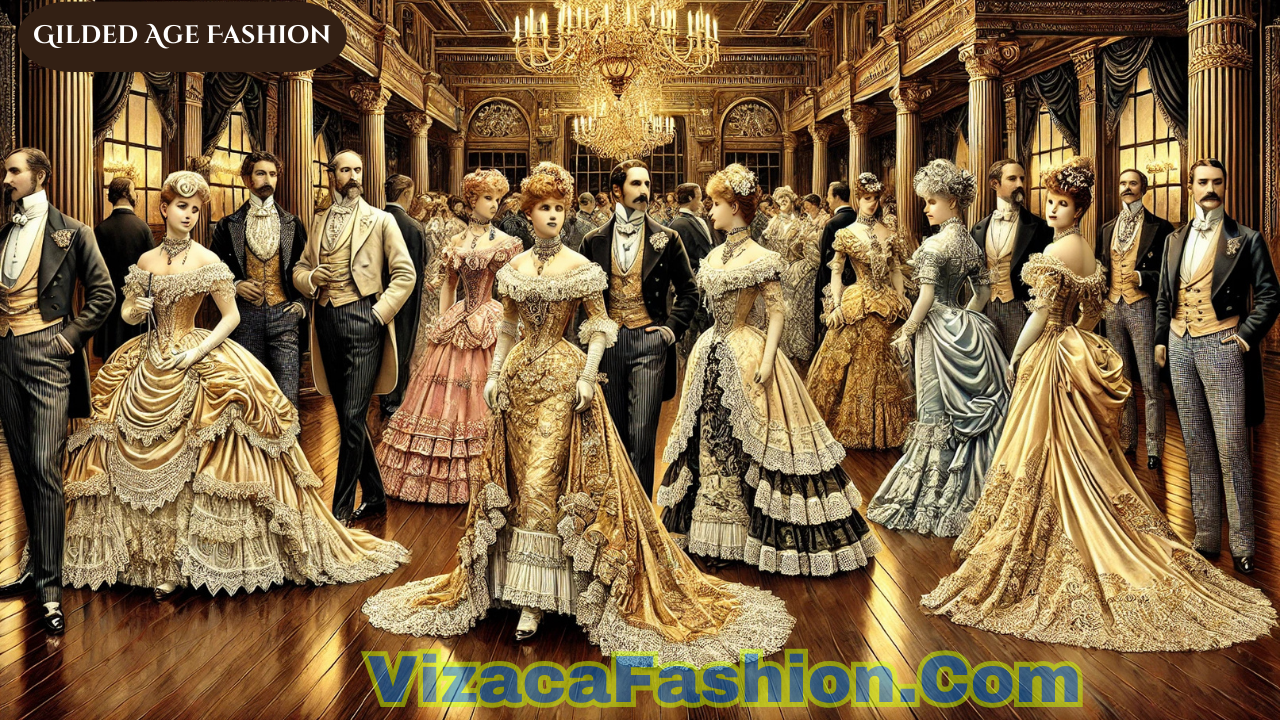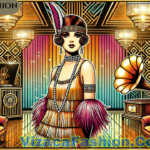The Gilded Age, spanning roughly from the 1870s to the early 1900s, was a period of immense wealth, industrialization, and societal transformation in the United States. This era saw a dramatic evolution in fashion, reflecting the economic boom and the desire of the elite to showcase their status. “Gilded Age Fashion” became synonymous with luxury, intricate designs, and the emergence of distinct gendered styles that defined social hierarchies.
The Opulence of Women’s Fashion
Women’s fashion during the Gilded Age was characterized by lavish materials, elaborate designs, and an emphasis on femininity. Dresses were often made from rich fabrics such as silk, velvet, and satin, adorned with intricate lace, beads, and embroidery. The corset was a defining feature of women’s attire, cinching the waist to create the coveted hourglass silhouette.
Key Elements of Women’s Attire:
- Bustle: The bustle became a signature component of women’s dresses, adding volume to the back of skirts.
- Trains and Layers: Long trains and multi-layered skirts were a mark of sophistication and wealth.
- Accessories: Gloves, bonnets, parasols, and jewelry were indispensable, adding to the overall grandeur of the ensemble.
These extravagant outfits were often worn to lavish balls, dinner parties, and other social gatherings, emphasizing the wearer’s place in high society.
Men’s Fashion: Refinement and Elegance
While men’s fashion during the Gilded Age was less extravagant than women’s, it was no less sophisticated. The industrial boom allowed for the mass production of tailored suits, making formalwear more accessible to the upper and middle classes.
Features of Men’s Attire:
- Three-Piece Suits: These consisted of a coat, waistcoat, and trousers, typically made from fine wool or tweed.
- Top Hats and Bowler Hats: Hats were an essential accessory, often denoting a man’s social standing.
- Formal Footwear: Patent leather shoes completed the look for formal occasions.
Men’s clothing emphasized structure and simplicity, reflecting their roles as breadwinners and decision-makers in a patriarchal society.
Children’s Fashion: Miniature Versions of Elegance
Children’s clothing during the Gilded Age mirrored adult styles, with a focus on formality and refinement. Young girls wore dresses with ruffles, bows, and lace, while boys donned miniature suits or sailor outfits. The attire reinforced societal expectations and prepared children for their future roles.
The Role of Fashion in Social Identity
Fashion during the Gilded Age was more than just clothing; it was a statement of identity and status. The wealthy elite used fashion to distinguish themselves from the working class. Designers such as Charles Frederick Worth revolutionized the industry, introducing haute couture and custom-made garments that catered to the tastes of affluent clients.
Fashion and Class Distinction:
- The Upper Class: Wore exclusive, custom-made attire and imported fabrics.
- The Middle Class: Embraced tailored, ready-to-wear clothing that imitated elite styles.
- The Working Class: Opted for functional, durable garments suitable for labor-intensive jobs.
Eveningwear and Social Gatherings
Eveningwear during the Gilded Age was a spectacle of extravagance. Women donned gowns with plunging necklines, opulent fabrics, and elaborate decorations. Men wore formal tailcoats and white bow ties, adhering to strict dress codes for events like opera nights, balls, and galas.
The Influence of Technology and Industry
The Gilded Age saw significant advancements in textile production and garment manufacturing. Sewing machines, synthetic dyes, and improved transportation made high-quality fabrics and clothing more accessible. These innovations allowed the burgeoning middle class to participate in fashion trends, though the elite maintained exclusivity through custom designs and imported materials.
Legacy of Gilded Age Fashion
The Gilded Age left an indelible mark on the world of fashion. Its emphasis on luxury, detail, and status continues to inspire modern designers. The period also set the stage for the democratization of fashion, as industrial advancements bridged the gap between the classes.
Conclusion
Gilded Age fashion was a reflection of its time—a blend of industrial progress, social stratification, and artistic expression. From the sumptuous gowns of elite women to the refined suits of gentlemen, every garment told a story of ambition and identity. Today, the legacy of Gilded Age fashion lives on as a testament to an era defined by opulence and transformation.


